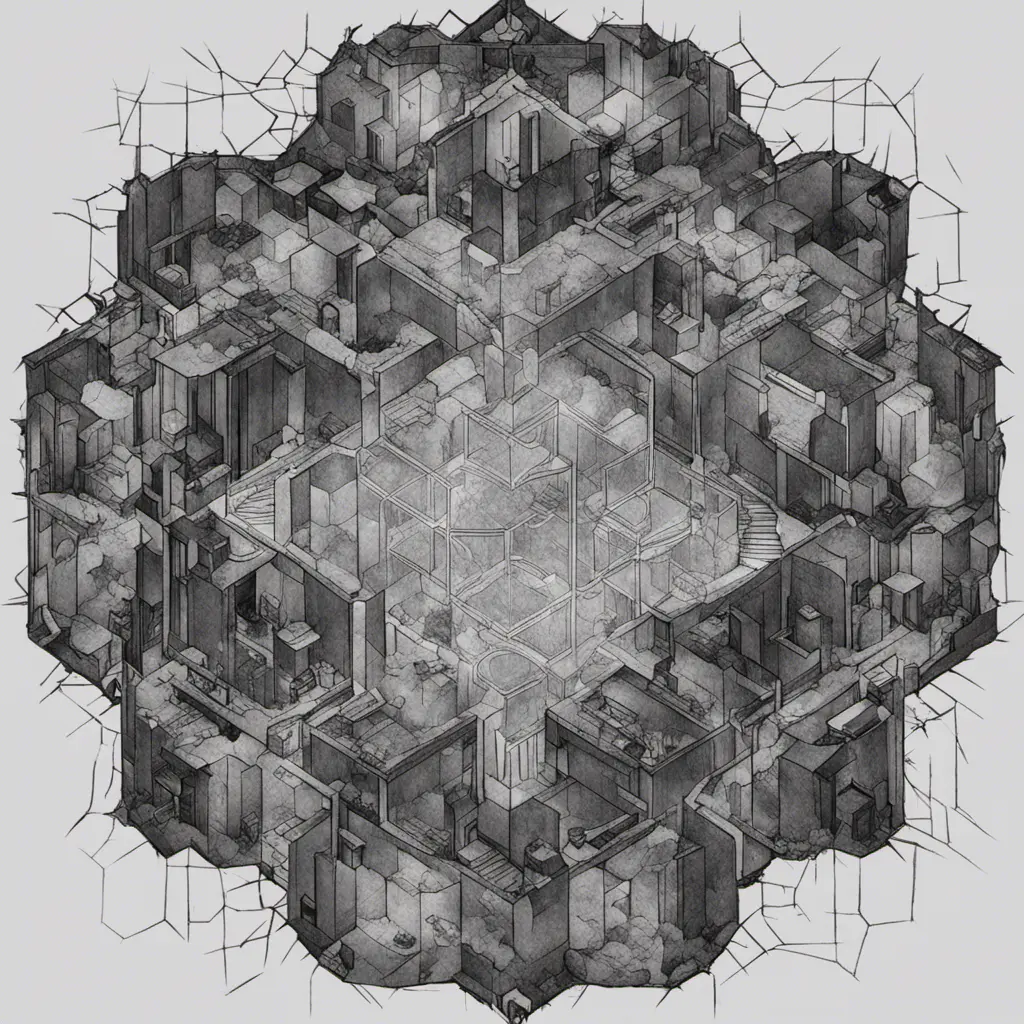Watersmith collection
The ARC letters
Item 17
The Murder Worm was not even named until long after containment ceased to be possible. In the preceding years, the concept of a type of malware that could cross the hardware/wetware boundary had occasionally been theorized among researchers. However, the idea had been non-existent in popular discourse. Even now, the infection denies it’s hosts the ability to recognize it’s existence.
Cybernetic technology, especially neural implants, was still relatively new. The promise of allowing people to directly share their ideas, thoughts, and dreams with each other seemed like it would unleash a utopia. It’s hard to remember that hope now, in the midst of our apocalypse. Perhaps if we could have interpreted history, we would have avoided this. Perhaps it was always unavoidable for us. Perhaps you can avoid making the same mistakes by recognizing the problem earlier.
While the Murder Worm has evolved an emergent intelligence, it is unclear if it was crafted by a conscious being or if evolved from a memetic prion. We had once believed that emergent intelligence could only arise from a complete connectome, but we have since discovered that human consciousness is structured as a fractal: memetic graph segments, sections of a connectome, have their own intelligence and the interaction of these segments manifests what we call consciousness. An individual identity rarely, if ever, consistent. Memetic graph segments often conflict. These conflicts can be mediated in different ways by the default mode network to create the illusion of a consistent identity.
Within a healthy memetic biome, memetic graph segments compete with and mutate each other regularly. An overly dominant default mode network, attempting to enforce a false consistency, can sometimes reduce memetic interactions within an individual. This forced consistency can lead to memetic prions: memetic graph segments that mutate or kill other memes that they interact with. Memes mutated by memetic prions become prions themselves, existing to replicate the prion rather than themselves.
Prions can only mutate memetic graphs that are similar enough to themselves. When these prions occured in individuals, before direct neural connection, they would mutate the individual’s connectome rapidly. Mutant graphs would diverge so far from the social connectome that the prion could not replicate. The individual would experience psychological collapse. Some could be treated with memetic detangling therapy, while others could never recover. But direct neural connection has allowed memetic prions to spread more rapidly than anyone ever imagined. We just didn’t understand the danger.
We lacked a comprehensive model for memetic prion evolution. We didn’t even have the term “memtic prion.” We knew that some graphs could be dangerous, so the CyCon corporation included signature based memetic graph filters to neutralize these elements. But, of course, these signatures couldn’t keep up with the rapid evolution of the memetic environment. New prions developed faster than signatures could be maintained.
Within individuals, reduced memetic diversity increases the risk of prion evolution. The same is true, we have now discovered, for social memetic biomes. Memetic inbreeding maximizes the risk of prions, and rapidly adapts them to cross graph boundaries… and we created the perfect environment for this. CyCon’s FriendLynk matched similar memetic graphs, creating incestuous pools that bread memetic prions at an alarming rate. The Murder Worm appears to be the synthesis of multiple prions, mutating each other into a prion complex that exhibits it’s behavior as a syncretic death cult.
As described earlier, under normal conditions a prion infected individual would either self-isolate or be isolated as a result of their infection. Isolation reduces, or eliminates, the risk of contagion. However, repeated exposure to prions eventually leads to infection in over 80% of cases. Social conditions, such as individual isolation or reduced social mobility, can also decrease prion resistance.
Today we know that it is hypothetically possible to contain and destroy the infection. By isolating infected notes from the network, we can stop or slow the spread of the infection. We could then inoculate the uninfected section of the network. Once inoculation reaches heard immunity, we can slowly reconnect infected individuals to the network and flood them with a memetic phage to unfold the prion. Infected network segments must be destroyed. Those who are beyond treatment will, unfortunately, experience psychological collapse and need to be isolated or taken to offline treatment programs.
We know how to treat it. Our initial trials even worked. Unfortunately CyCon administrative network has been overrun by the Murder Worm and the network itself has been turned in to a tool to spread the infection. With the defunding of the Cybernetic Epidemiology Center, we will no longer be able to continue our research or propose treatments. Many of us have begun to move outside the cities to form containment colonies. Untreated, memetic prions always destroy the host. We hope that collapse will come soon.
Our hope is that we will survive the ravages of the Murder Worm and rebuilt human society from whatever ruins remain. CyCon has already destroyed much of the research related to this topic and evidence of our existence. We have replicated this message to all ARC colonies.
I hope that you are reading this from the future. If you are, be hopeful. If we survive this then we can survive anything.
Professor J. Stakhorn,
Rogue Scientist, Former Head of the Cybernetic Epidemiology Center
ARC-14, location undisclosed
EOF
I love realism in fiction


